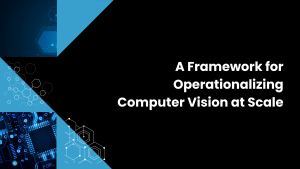Enterprise Connect updates from Five9, NICE, Salesforce, Webex, and Talkdesk, and Adobe Summit News, including updates from IBM, The Content Authority Initiative, and more
Charlie Mitchell, senior editor at CX Today, does a fantastic job of bringing industry analysts together to recap events and share insights on a regular basis. And whenever he gets this particular crew together, it’s always a lively discussion. In this recent episode of Charlie’s CX TV series, I’m joined by fellow analysts Rebecca Wettemann, Michael Fauscette, Simon Harrison, and the incomparable force that is Liz Miller to sort through some highlights coming out of the recently held Enterprise Connect and Adobe Summit events, touching on some key announcements coming out of each event.
Watch the video here, and read on for brief recaps of the news shared from Enterprise Connect Announcements from Five9, NICE, Salesforce, Webex, Talkdesk and Adobe Summit News
Enterprise Connect News Roundup: Five9, NICE, Salesforce, Webex, and Talkdesk Updates
The discussion and analyst insights covered announcements out of Enterprise Connect from the following vendors:
– Five9‘s introduction of its click-and-customize GenAI studio for contact centers
– NICE‘s Enlighten AI suite, designed to power more personalized experiences
– Salesforce‘s AI for contact center updates
– Webex‘s contact center updates, including an upcoming agent wellness functionality that is impressive
– Talkdesk‘s gen AI suite for on-prem contact centers
Five9’s Launch of GenAI Studio
Five9 launched GenAI Studio, its enterprise-ready solution that touts click and customize gen AI for the contact center. While it’s a given prepackaged solutions can often be challenging, Five9’s approach here has been a forward-looking, strategic one, predicting and anticipating customer demand for AI solutions in the contact center. Five9’s acquisitions of Aceyus in 2023 and the 2020 acquisitions of Inference Solutions and Virtual Observer all point to that strategic solution development.
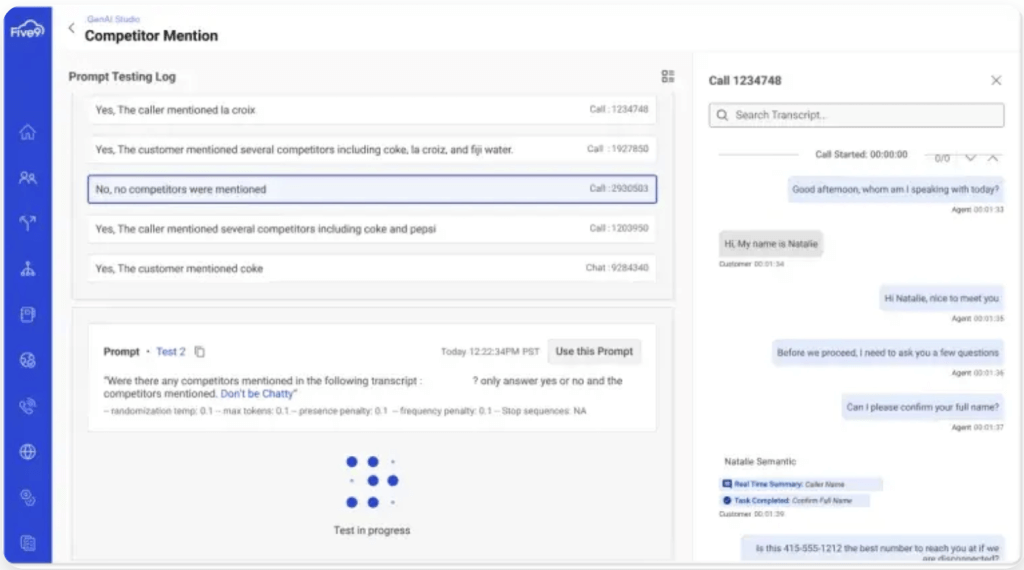
Five9’s Gen AI Studio is what you would expect from the team at Five9. It’s easy to use and is a low-code, no-code, gen AI model with a prompt management hub. The solution provides customers with the ability to:
- Personalize customer and employee experiences with contextually relevant data.
- Deliver responsible AI by providing monitoring and control of gen AI outputs using Five9’s models.
- Provide users with greater control and flexibility over GenAI capabilities.
I like Five9’s Agent Assist AI Summaries, which are designed to reduce the workload for agents, especially as it relates to reducing the workload after the call. This is rapidly becoming table stakes for contact center solutions, and Five9 claims its Agent Assist AI Summaries can summarize a call transcript in a matter of seconds, saving up to 40% of an agent’s time.
Talkdesk: Another ‘Industry First’
Talkdesk is adroitly building relationships with on-prem customers today, helping them navigate this journey by meeting them where they are. It’s a smart strategy that allows for the building of deep customer relationships that serve multiple purposes. Solve for customer needs today with on-prem solutions and prep customers for eventually moving their on-prem ops to the cloud when they’re ready to do so.
Talkdesk’s Ascend Connect Suite is designed for on-prem contact centers without the need to completely overhaul their infrastructure.
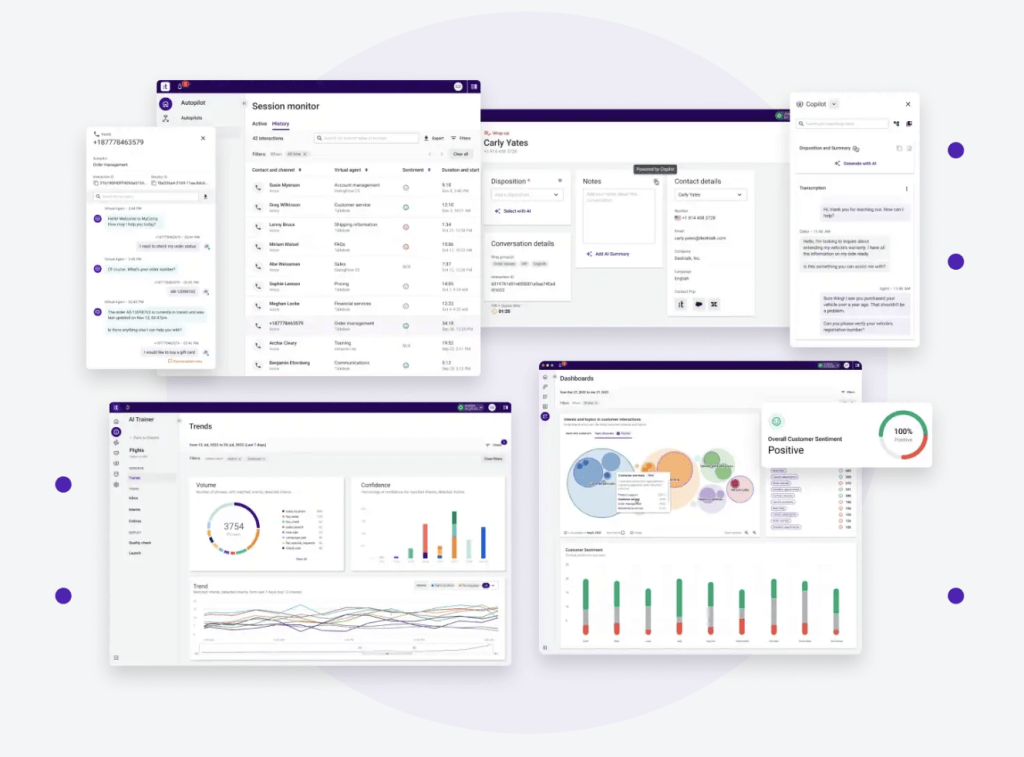
The Ascend Connect Suite, which is touted as a no-code intuitive interface, provides drag-and-drop functionality and a drag-and-drop interface. This is designed for ease of use by both IT teams and citizen developers in deploying, customizing, and maintaining AI models. The Ascent Connect Suite also includes:
- Conversational AI functionality that leverages gen AI and automates answers. In some instances it can automatically building new bot flows designed to help tailor responses to audience, tone, and context.
- Talkdesk Copilot (hooray – another “copilot”) is a virtual assistant that listens in and suggests the next best actions, answers, summarizes calls, and automates after-call work. Again, this is rapidly becoming table stakes in the contact center realm, so this is not functionality that’s in any way surprising.
- Talkdesk Interaction Analytics is a conversational intelligence solution tracking sentiment, intent, and customer behavior supported by gen AI.
- Talkdesk AI Trainer is designed to put customers at ease knowing this “human-in-the-loop” tool will allow them to see, simulate, and put guardrails on AI, ensuring responsible AI use. I see a growing interest from customers on the responsible AI front, so this is an attractive feature and something I’d like to hear more about from Talkdesk.
NICE Announces Enlighten XM, an addition to its Enlighten AI Suite
At Enterprise Connect, NICE announced its Enlighten XM (Experience Memory), an addition to its Enlighten AI Suite. Enlighten XM is designed to provide insights that allow for a deeper understanding of customer preferences and each customer’s unique data, by harnessing:
- Customer conversation data
- Metadata
- Analytics from the CX ecosystem
Data that is trained on company and customer-specific data can drive personalized, speedier, more effective outcomes, which naturally is always the goal.
NICE shared that Enlighten AI is augmenting some 100 million customer conversations a month. NICE also reported seeing a whopping 375% YoY increase in bookings for the CX AI suite, which indicated customers are adopting and going all in on the benefits AI can deliver in the contact center.
Some features that got my attention include:
- There is a unique memory graph that is created for each customer, allowing for more personalized service
- Continuous Conversational Sync is designed for when a customer moves from channel to channel in their interactions or on their devices. Since we are all doing that pretty much all day, every day, this multi-channel functionality is quickly becoming a must-have feature
- NICE’s “adaptive personalization engine” is powered by the brand’s knowledge base and the LLM’s data memory
All functionality and improvements are geared toward the holy grail of all things customer experience: driving stronger, deeper relationships, effecting a quicker resolution of problems, resulting in happier, more loyal customers.
Salesforce’s New Contact Center Innovations
In contact center, we are seeing Salesforce’s partnership with Genesys emerge as a key part of the equation, and Salesforce appears to be gaining some momentum on this front. That said, in our conversation, the analysts agreed that we would like to see more guidance around this from a customer standpoint and learn more specifically what functionality they are using where and when. I’ll be looking for some customer use case instances from Salesforce on that front.
Some of the new contact center-specific features announced by Salesforce at Enterprise Connect include:
- Advanced knowledge management tools: Einstein Article Recommendations and Knowledge Generation to make information more accessible and help support agents in their decision-making processes.
- Data analytics leverage CRM and contact data. This can provide a 360-degree view of the customer, enabling more personalized service.
- AI-driven insights to provide agents with real-time information and predictive analytics for improved customer interactions.
- Expansion of omnichannel capabilities
The Salesforce contact center offering is attractive because it doesn’t just rely on call data; it also has massive CRM data, which is a differentiator. Integrating this data provides a more holistic view of the customer’s entire history, which allows for the delivery of more personalized, more efficient, and more effective customer service.
Another attractive differentiator is that Salesforce’s AI-driven analytics can do trend analysis and predictive modeling, forecasting customer needs and behaviors.
The real value here is that these moves connect the contact center to the rest of the company and help make it a predictive, proactive, intelligent hub that can deliver some pretty significant value in a way that others might not. This shows the power of Salesforce.
The biggest challenge that I see for Salesforce on the contact center front, and which we discussed at length, is that Salesforce is generally one of the more expensive if not THE most expensive solution. It’s notoriously complex, and these combined might make it less attractive than some other contact center solutions. It will be interesting to watch and see what kind of traction Salesforce has here.
Webex Contact Center Updates
The team at Webex showcased its contact center offerings, which is a built from the ground up, in the cloud, solution. As expected from anyone in this space, it is designed to:
- Help drive proactive communications and engagement and allow agents to get out in front of problems.
- Helping resolve issues, ideally without a human agent in the loop.
- Bringing human engagement into the equation if and when it’s needed, in a seamless way.
All of this is done across multiple channels and powered by AI. The goal is never to make customers wait, never make them repeat themselves, and always make them feel as though a personal concierge is assisting in every situation. Every business faces the same customer experience imperative: maximizing customer satisfaction while minimizing cost. Webex is focused on delivering contact center solutions that embrace the mantra: “automate when you can, human where you must.”
Webex’s AI tools are in line with offerings from other vendors, providing personalized, proactive comms, providing agents with knowledge and productivity tools to help them be more effective, and providing real-time optimization to drive efficiencies. Webex’s audio intelligence, self-service with virtual agents, and proactive and predictive outbound engagement features are all available now, with its solution focusing on agent wellbeing with burnout detection functionality coming soon.
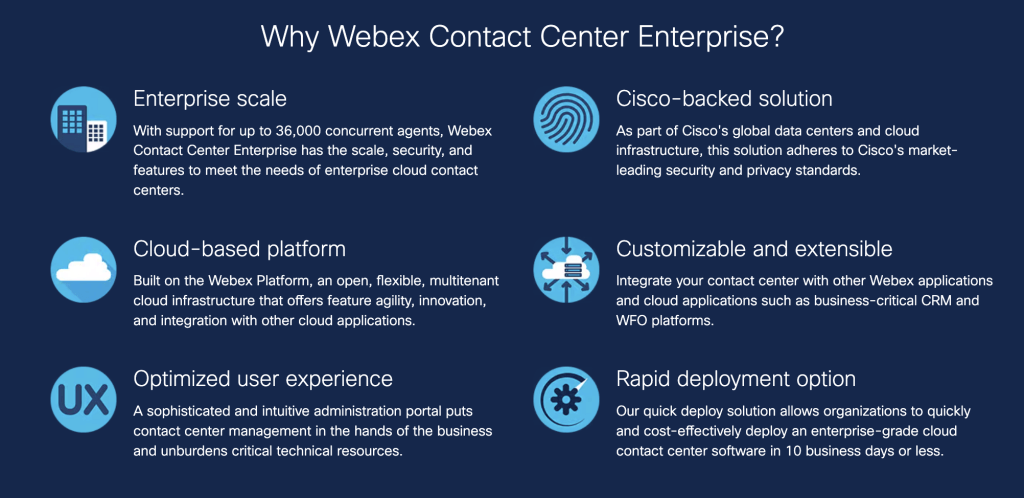
For me, what sets Webex apart, both with its contact center offerings and its broader collaboration suite, is its deep roots in and reputation for security. In my opinion, no other vendor holds a candle to Webex’s capabilities in and commitment to security as a foundational part of any solution. The fact that Webex Contact Center Enterprise is authorized for FedRAMP, giving U.S. state and federal governments the ability to deploy a modern, secure, scalable, and flexible platform backed by Cisco’s networking and security chops speaks volumes about the company’s reputation and capabilities on the security front.
Adobe Summit Highlights
Our conversation shifted to a recap of news coming out of Adobe’s always amazing Adobe Summit event, aptly described by Liz as “it was like a firehose, a prettier firehose, like Firefly-colored pretty.” Some announcements of note include:
Adobe’s Firefly suite of models and the AI Assistant suite of models are connected, even though they are multiple suites of services. As Liz pointed out, unlike what we see and hear from many other vendors, one of the most impressive things about Adobe Summit announcements is that they are reality, not promises. The technology is usable, and it’s usable today. It’s enterprise-ready, and it’s enterprise-ready today.
Custom models for Firefly that begin to train on your images, style guide, and assets once uploaded are very attractive — I predict we’ll begin to hear a lot about this because it’s such a big part of the overall value proposition for using Firefly.
Adobe has done the hard work here. It’s clear they have considered AI models and their potential power, and most importantly, Adobe has ensured that they are powerful enough, and safe enough, for enterprise use.
– The Content Authenticity Initiative (of which Adobe is a part) continues to gain members and become a powerful force in the industry.
– Updates to Adobe’s Content Supply Chain for Enterprises are designed to help manage assets and campaigns, serve creators, ensure brand consistency — all of which becomes more important as the amount of content we’re collectively creating soars.
– Adobe’s AI Assistant now works across applications (which it did not do previously), and the idea of federated data removes the need to move data from one place to another. We were collectively very excited about this.
– Adobe’s announcements around Journey Optimizer, B2B edition, was described by our team of analysts as a “home run” and if you’ve not yet had a chance to check it out, do. Journey Optimizer, B2B edition allows for advanced personalization and testing for any inbound properties (web apps, mobile apps, video consoles, smart TVs, ATMs, IoT devices, desktop apps, and kiosks), enabling the delivering highly personalized experiences and custom, tailored user journeys.
IBM Adobe Partnership
Utilizing the sphere in Las Vegas during Adobe Summit to showcase the IBM Adobe relationship was a great touch.
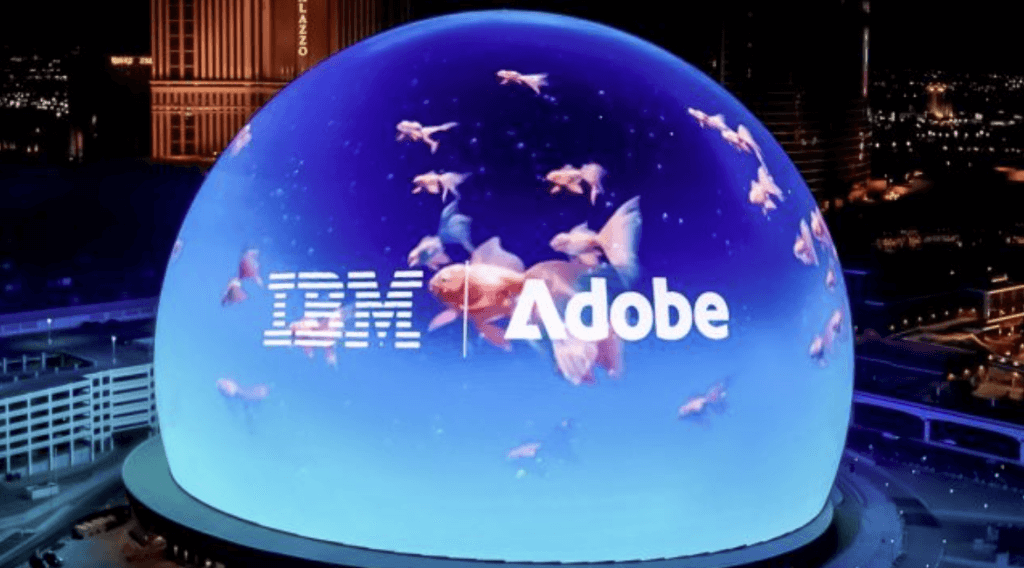
IBM and Adobe have a long-standing relationship centered on helping customers deliver meaningful, personalized experiences. Both companies are focused on helping clients become more agile marketers through AI-powered experiences across all digital touchpoints.
During Summit, much of the messaging from IBM was centered around its “Trust what you create” campaign done in partnership with Ogilvy and claims that together IBM and Adobe deliver AI-powered solutions brands can trust. This was cleverly illustrated by showing what can happen when AI goes wrong, and it invariably will, but that with tools like Adobe Firefly and IBM watsonx, clients can feel confident they are using AI that is reliable and trustworthy. Below is a visual created and showcased at the event showing AI errors around bias, noncompliance, hallucinations and more.
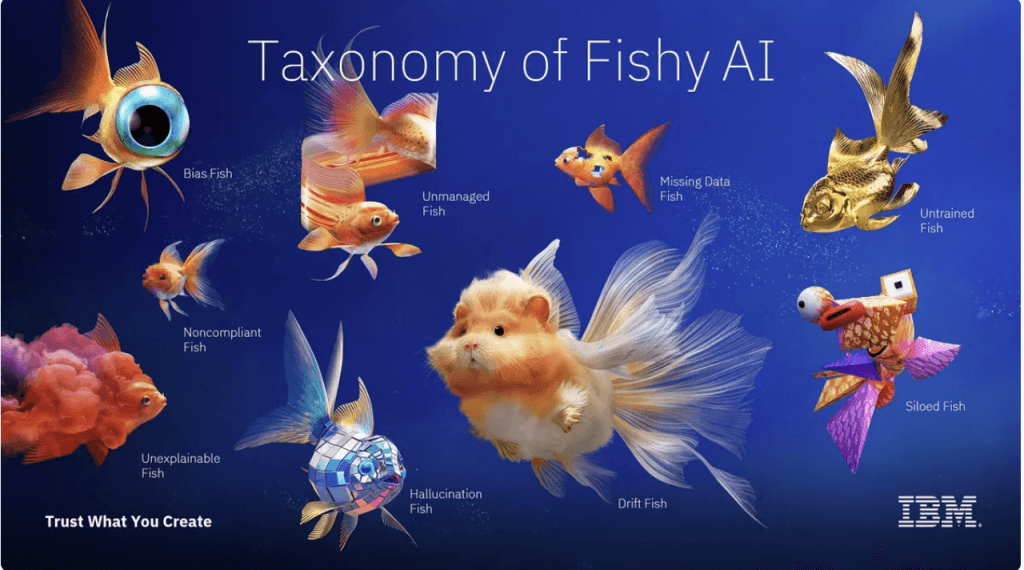
Content supply chain. Solving for content supply chain challenges has been theme for Adobe for some time now. In a recently published report from Adobe, AWS, and the IBM Institute for Business Value, The revolutionary content supply chain: How generative AI supercharges creativity and productivity, research showed that 88% of customer experience and marketing pros reported that content demands have at least doubled in the last two years, and two-thirds of those surveyed shared they expect content demands to increase between fivefold and twentyfold within the next two years Our collective reality is clear: Getting arms around content has never been more challenging, or important. That said, teams are leaner, budgets are smaller, and resources are scarcer than ever. That’s why solutions that help surmount these challenges are so attractive.
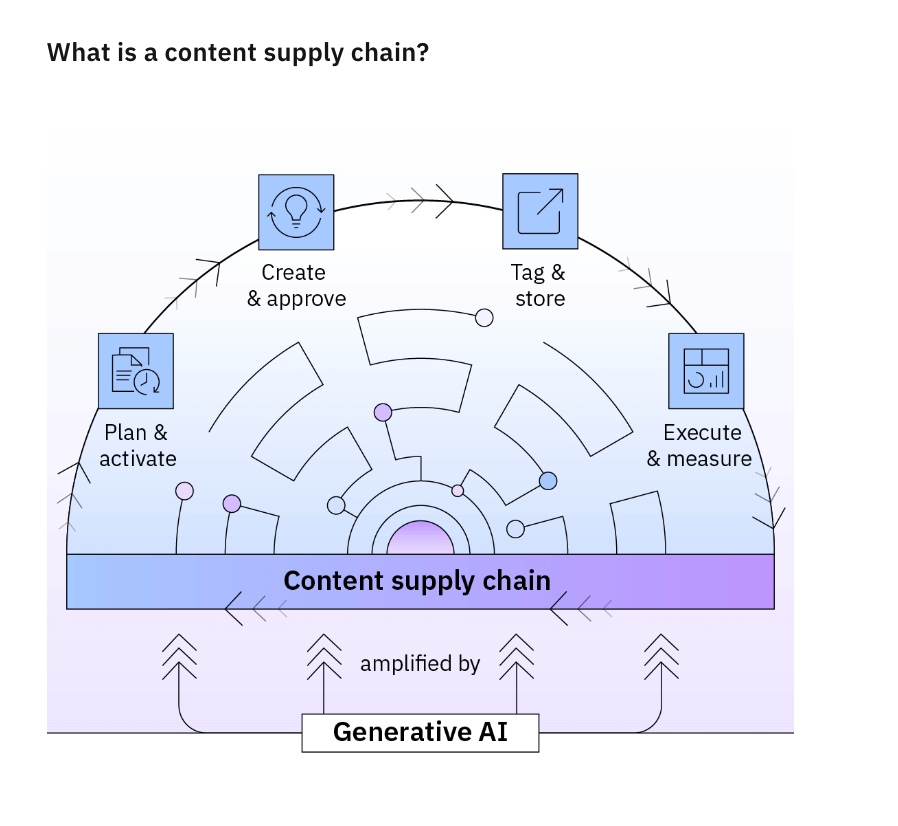
Image source: Adobe
Optimizing content supply chain. The process of creating, managing, reviewing, approving, deploying, and analyzing content, and connecting all the people, processes, tools, insights, and ways of working in a single workflow sounds like it would be something that all organizations do. Reality is the process is often disjointed, siloed, and frustrating. Complex stakeholders, competing agendas, silos throughout organizations, different processes, systems, repositories, and a lack of coordination among teams are challenges organizations of all sizes are wrestling with today.
I feel this daily in my relatively small organization and can’t imagine what it would be like working with a distributed team in an enterprise. Add to that concerns around brand standards compliance, governance, and risk, and it’s easy to see the nuances of content supply chain and how critically important it is for organizations to effectively manage and control this.
IBM iX, the experience design partner within IBM consulting, has launched a new content supply chain services offering that leverages Adobe’s tech. Adobe and IBM are partnering to offer clients an integrated content supply chain ecosystem. Automation, increased visibility, easier access to create AND to creative assets, and better collaboration are all part of this value prop. The ability to produce more content, more quickly, for and across multiple channels are what they’re serving up for clients. The services include the ability to deliver:
- Personalization at scale
- Intelligent commerce (transforming the omnichannel experience with AI and automation). Using data and AI, combined with the IBM iX Experience Orchestrator, IBM’s open source framework that accelerates clients’ composable commerce and modernization efforts is designed to deliver better outcomes, better experiences, and expand reach and relevance
Other announcements include a partnership with Adobe to incorporate weather data from The Weather Company (owned by IBM), paired with IBM’s sustainability software, including IBM Sterling Order Management, which helps with order management across channels and devices, and IBM Sterling Intelligent Promising, which helps with inventory management and cost management.
Weather data is a ‘proven predictor of consumer behavior’ and impacts consumer purchasing habits in retail, healthcare, travel and hospitality, and CPG. Getting deeper, real-time insights into how the weather changes behavior allows for delivering the right experiences at the right time.
Other Adobe Summit News
AI and its impact on marketing is clear: Adobe and others are stepping up to address that. Adobe, with deep roots in the creator ecosystem, endeavors to rule the digital experience software landscape, that has always been clear. Obviously, we saw a generative AI focus across product lines, with updates to Adobe Experience Cloud and Adobe Creative Cloud, all designed to drive personalization at scale and enhance content production and management.
Worth noting, Adobe reported its digital experience solutions generated $4.9 billion in the last fiscal year, which is less than the digital media business, which was at $14.2 billion, but still significant.
A couple of final thoughts I’ll toss out that we analysts are noodling:
- Is the pace of innovation something that impacts integration and alignment and makes things more complex for customers?
- While Adobe is focused on democratization, what about the learning curve? Is it too steep for ordinary, average users: does it require too much tech knowledge/capabilities?
What are we going to see moving forward? Individual AI functionality per application, or a complete AI framework across the whole ecosystem? I think that we’ll see both in the near term, but I believe we’ll see a movement toward adoption of AI-powered frameworks comprehensively throughout the ecosystem from many vendors. It only makes sense.
Other coverage of interest: Zoom News and Announcements from Enterprise Connect



